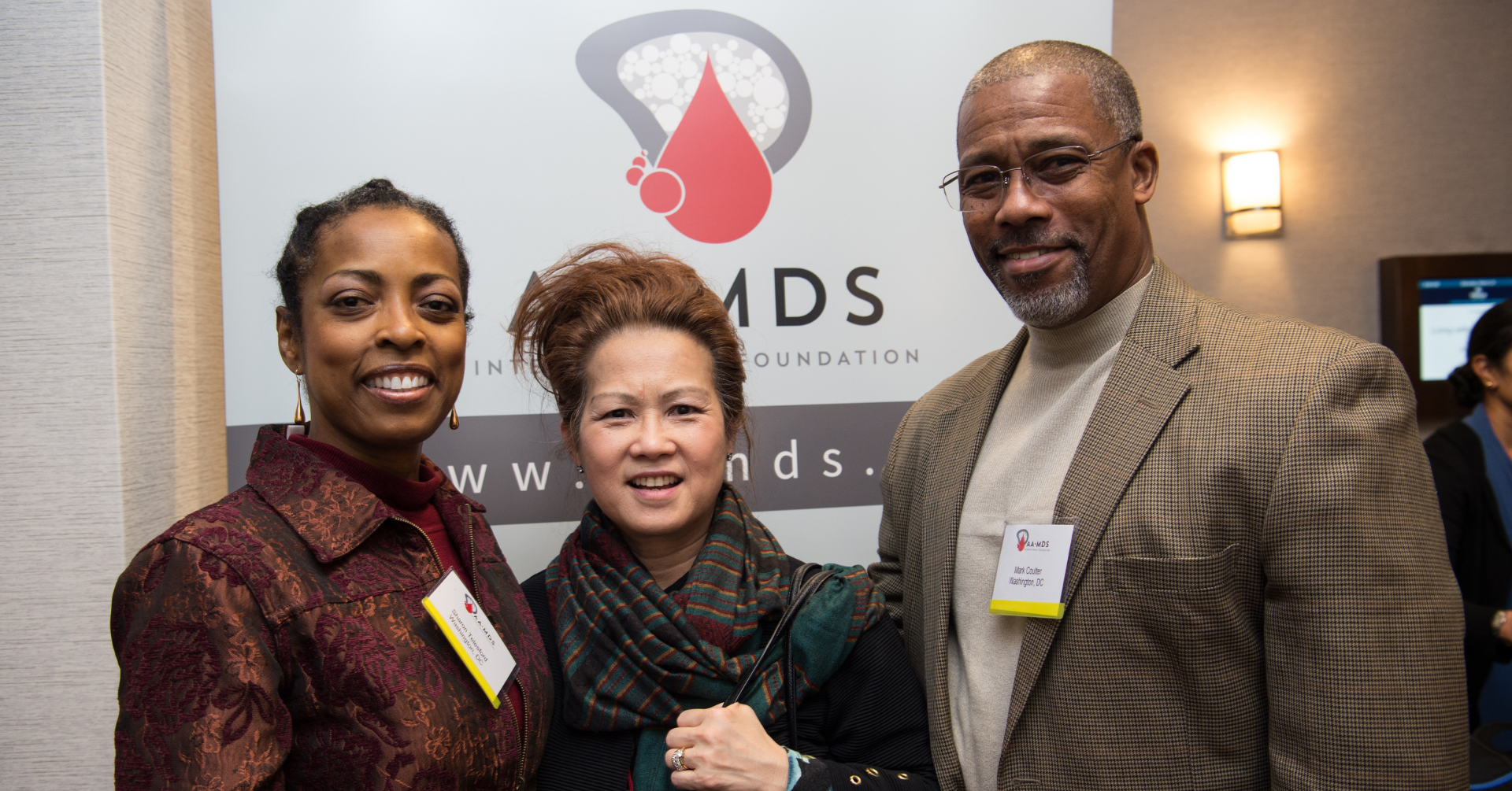Fifteen student survivors of bone marrow failure diseases have been awarded Matthew Debono Memorial Scholarships for the 2013-2014 school year. The scholarships, which range from $1,000 to $2,000, are awarded annually and are funded by the family and friends of Matthew Debono, who died in 1986 from aplastic anemia.
$18,000 was awarded to recipients hailing from 13 states. At least twelve of the recipients plan to work in the medical field, studying to be physicians, nurses, and medical technologists. They have been inspired by their personal experiences battling these diseases. Like Matthew Debono, most have fought or are still fighting aplastic anemia. Others have also been affected by PNH. They have survived difficult treatments for their disease and through their own determination and hard work have positioned themselves to attend college and follow their dreams.
Read more about the Matthew Debono Memorial Scholarship Fund.
2013 Recipients
Kyle Anderson

In July 2010, Kyle spent his 16th birthday in a Montana hospital, jaundiced with a rapidly failing liver facing a possible liver transplant. The liver failure miraculously reversed itself only to reveal an even greater problem. Soon afterwards, doctors noticed a drop in all three blood counts and by August, Kyle was diagnosed with aplastic anemia. One month later, his brother Ryan was found to be a perfect match and he received a bone marrow transplant. Isolated from his friends and forced to miss an entire year of high school during his recovery, it was here that he began to “examine who I was -- attempting to reinforce those qualities which I felt were important in becoming a better person down the road.” Those qualities include leadership, academic achievement, and an interest in community service. Kyle was the Senior Class Vice President for his high school compiling a 3.5 plus GPA. He also volunteers for food and bone marrow drives. An avid baseball player, he is also the catcher for the local Bitterroot Bucs American Legion team. The Stevensville, Montana native is planning to attend the University of Montana – Missoula this fall to pursue a degree in biology, eventually planning to go on to medical school.
In His Own Words
Though my illness has not exactly been the highlight of my life thus far, I do not want to look back on it twenty years from now and wish it had never happened, but rather be content knowing my struggles provided a positive jumpstart to my adult life. I believe it has done so already, by creating a spark of interest and providing a background in the field of medicine.
Not everyone is exposed to the inner workings of a hospital or schooled in the medical process at such a young age. A mixed blessing, I know, but it is important to me that I take full advantage of the cards I’ve been dealt. I realize the road to becoming a doctor will be extremely long and daunting, but I am committed to providing a life for myself while also being given the opportunity to help those who may be going through hardships similar to those I faced.
One of the most rewarding achievements in my life thus far was organizing and hosting a bone marrow drive in association with the Be The Match Foundation in which we raised upwards of $4,000 dollars and registered more than 40 people to the marrow donor registry. The experience I have gained through this drive has made me realize that I do in fact have a lot to offer to the world and that the pursuit of a medical degree would be a fitting way for me to do so.
Kristen Cavalleri
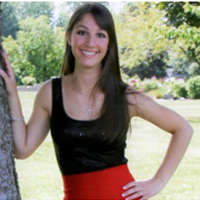
Kristen has earned her second Matthew Debono Memorial Scholarship. Now finishing up her freshman year at Niagara University, the communications major continues to excel academically as a Dean’s List student during her first semester, while working part-time at the coffee bar of a local grocery store. Kristen knows she was fortunate to survive her fight with aplastic anemia at age three. Her parents had a difficult decision to make. At the time, her mother was seven months pregnant with a baby boy. Her parents’ options were to await the birth of Kristen’s brother and then try a bone marrow transplant using stem cells from his umbilical cord blood or try a clinical trial. They were afraid of the possible side effects of the clinical trial, some of which could have been fatal or led to chronic issues. They started the trial anyway and “hoped, waited and prayed.” “My very pregnant mother never left my side,” says Kristen. “She slept at the end of my hospital bed every night.” When her brother was born, they were disappointed to learn he was not a match so he could not become a donor. Miraculously, the clinical trial started to work and after three months her blood counts came back up to normal levels.
Kristen has made the most of her good fortune. In high school, she had a 3.75 GPA and was elected her chapter’s President of the National Honor Society. The North Tonawanda, NY native says she would like to have a job that allows her to educate others “regarding serious life issues, including life-threatening diseases like aplastic anemia.”
In Her Own Words
The things that I remember are small and random tidbits of information. I remember going into surgery to get my broviac catheter put in with my favorite stuffed animal next to me. I remember waking up late at night and watching Scooby Doo. I remember my father washing my hair in the kitchen sink because I couldn’t shower and get my broviac catheter wet. I remember getting sick, many times, and one nurse that clearly sticks out in my memory for his immense kindness. Most of these memories are unclear and only glimpses into what my life was really like during those times.
My parent’s memories are a little more vivid. They remember all the things I’ve forgotten or couldn’t understand. They were there experiencing everything with the utmost emotion possible. They sat there in the room and were told that their only child, who they’d done everything in their power to take care of, was sick. It wasn’t just the common cold though; it was an illness that they couldn’t cure. The first night that I spent in the hospital my father sat at the end of the bed and rubbed my side where my bone marrow was and told my mother he was going to make it better. He sat there all night, trying to make it work, to make it better. The experience from a parent’s point of view is that of one who has lost their control. But even on my parents’ worst days, they found strength in one another. We found strength by pulling together as a family.
Derek Cope

Derek believes in the power of positive thinking. In late 2009, after his diagnosis of aplastic anemia and subsequent treatment of high-dose chemotherapy, he was fighting a mental battle as well as a physical one. He noticed that when he was feeling upset or pessimistic, his health and blood counts would decline. When he felt more optimistic, his counts improved. Once he realized the trend he says, “I began believing that I was going to beat my disease and never looked back.” The two-time Debono scholar returned to college at Stony Brook University in the fall of 2010 and has become central to a beehive of activity. Not only is he a strong student, but he is immersed in leadership positions and community service initiatives. Derek is involved in undergraduate student government and he is also a volunteer at the Stony Brook Pediatric Cancer Center. Through his leadership as president of the men’s soccer club, a lack of recreation space was recognized and a multi-million dollar project to develop field space was initiated.
In November 2012, 22-year-old Derek worked on a team that hosted the first student-run bone marrow drive at the university. In a one-day span, 841 people were added to the registry. One match has already been found through this drive. The Jessup, Maryland native was recently accepted into the one-year accelerated Bachelor of Science in Nursing program at Stony Brook and he plans to graduate in June 2014. His long-term goal is to become a nurse anesthetist and work in an operating room. This is his second Debono scholarship.
In His Own Words
I navigated through my disease with the support of my family and friends, and the belief that I was stronger than the disease I was battling. I knew I had a full life to live and that although the disease presented many obstacles, I recognized I had no other choice but to face them head on. I cherished the fact that I was still alive and that I could never forget this. The best advice I can give to anyone battling aplastic anemia is not to think, “Why me?", but to think “You can’t beat me."
Receiving a scholarship from the AA&MDS International Foundation means to me that other people who are diagnosed with aplastic anemia will be able to read my story and truly know that things will get better with time. It also means that people will be able to read about someone who survives this disease and goes on to accomplish great things that make their community a better place. I want my story to motivate and inspire people diagnosed with this disease to never give up fighting and to battle their disease every day with more intensity than the last. During times where I felt confused and lost by my diagnosis, reading stories from survivors brought me back to the light. My story will hopefully bring people towards the realization of their own bravery.
Kellie Day

Kellie was diagnosed with aplastic anemia in March 2005 when she was eleven years old. After two years of unsuccessful treatment, she was diagnosed with a second disease: PNH. Fortunately, she was able to receive a life-saving bone marrow transplant from her brother at St. Jude Children’s Research Hospital. This fall, Kellie will continue her undergraduate studies at Carson-Newman University, in her home state of Tennessee, where she will begin her sophomore year. She is pursuing a degree in nursing – a degree for which she is inspired not only by her own experiences, but also the experiences of those she has loved and befriended. When she was undergoing treatment, she knew many children afflicted with cancer who subsequently passed away. Her mother is currently battling breast cancer. As a result, she is working towards her goal to become an oncology nurse.
She is an excellent student and a leader. Kellie has compiled close to a 3.7 GPA during her freshman year of college, and while in high school was co-president of the student body. An active volunteer, she has participated in the Susan G. Komen Race For the Cure and the planning of a Relay for Life Event. Kellie has also raised over $1,200 for St. Jude Hospital and spends time with residents of a local nursing home.
In Her Own Words
Most people don’t like to talk about the psychological damage because it’s scary and lasts longer than the physical scars do. Over my time at the local hospital and St. Jude, I met so many children who have forever changed my life. The only thing is that most of them have passed away because of cancer. For being nineteen years old, I have been to far too many funerals. After a while, the death that seemed to be constantly surrounding me eventually got to me. I felt guilty for surviving when most of my friends didn’t.
I look at my situation and know that I have two options. Option one consists of me feeling sorry for myself and letting the guilt rule my life. I would live a very cynical and bitter life. Or, I can take option two; I can look at the challenge I faced as a blessing. I can be joyful that I met those children who changed my life because if it wasn’t for them I wouldn’t be me. It’s a struggle, but every day I choose the second option.
Because of the challenge I faced, I choose to not accept being mediocre. My dream is to be an oncology nurse so I can help other children who are going through the same thing I went through. I don’t live for myself anymore; I live for those kids who didn’t get a chance to live their full life. They are my inspiration to never give up. Not a day goes by that I don’t think of my friends who passed away. Every time I see their faces in my mind, it reminds me that I have the opportunity to live.
Bailey Hildebrand
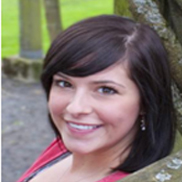
When being shuttled two-and-a-half hours each way from her home in Cottage Grove, Oregon to the children’s hospital in Portland, Bailey was always cold. Her mother, who would drive her to most of those appointments would turn the heat on full blast so her fifteen-year-old daughter with aplastic anemia would be comfortable. After a few trips where her mom melted from the heat, she surprised Bailey with an electric blanket. It’s something Bailey says she and her mom laugh about now because it kept them both sane through difficult times.
Diagnosed in September 2008, she struggled through two years of treatment in which she missed a lot of school, and could not participate in her favorite sports of swimming and water polo. It wasn’t until 2010 that she went into remission. Bailey is still monitored for her disease but says her “health is holding steady and my blood counts are doing well.” She has moved forward with her life and future career. The two-time Debono Scholar was recently accepted into the Vascular Technology Program at Oregon Institute of Technology for her junior year. She is now well on her way to working in the medical imaging field. Bailey says the stress of waiting for acceptance into the program may have been harder than dealing with her disease. She is an excellent student having compiled a 3.4 GPA in college. Bailey says part of her drive to succeed is not only to make her own family proud, but she also wants to make the Debono family proud for helping her work towards her dreams.
In Her Own Words
What can I pass along to those who are newly diagnosed? My first bit of advice would be to learn. Learn all that you can about the disease that has taken control of your body, but not your mind and soul. I needed to know what was happening and what may lie ahead. My second bit of advice would be to ask questions – as many questions as you need so that you are a part of your health team. Don’t float along, hide in a shell, or allow others to make all the decisions for you. Be an active part of your health care team. Ask who, what, where, why, and if you need to ask it again – ask as many times as is necessary for you to understand.
My last piece of advice is to surround yourself with the love and support of as many friends and family members as you can. My support came in so many different forms. The friend who made sure I had coloring books, crayons and all the Sponge Bob Crabby Patty candy I needed for the long rides to and from the children’s hospital for my weekly and bi-weekly testing; the friend who sat by my side for my first blood transfusion and made me a charm bracelet to commemorate the occasion; my water polo and swim teams who wore the AA&MDSIF bravery bracelets to show their support for me; and my teachers, coaches, and counselors who worked with me to assure that I could attend classes when I felt up to it, but understood when I couldn’t and made sure I had what I needed to succeed in school. There was the friend who brought me all the homework and handouts from school to save my family from having to go pick it up every day. And of course, there is the support of my family. My mom works in the medical field as a medical technologist and knew from the first CBC (complete blood count) result that the road ahead would not be easy but she and my dad met the challenge head on.
Kayla Iles
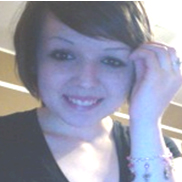
In August 2010, Kayla was just starting her senior year of high school. She had a 3.8 GPA and had been accepted into Xavier University for pre-med studies. The 18-year-old’s plan was to become a plastic surgeon. All that changed with her diagnosis of aplastic anemia in March 2011. Receiving blood and platelet transfusions on a frequent basis, she did not want to give up on going to school in the fall of that year; however, the subsequent need to start ATG treatment made that impossible. “I was heartbroken,” says the Elsmere, Kentucky native. In January 2012, an unrelated donor was found and Kayla went through a bone marrow transplant at Cincinnati Children’s Hospital. She had post-transplant complications and suffered through multiple admissions to the intensive-care unit with viruses and septic shock.
The whole experience changed her life goals. This January, Kayla finally did go to college, but it was the Christ College of Nursing and Health Sciences. Her dream now is to become a patient care assistant after two years and then a registered nurse upon graduation. She says she has not ruled out the possibility of continuing her education to become a nurse practitioner or going to medical school; however, her greatest desire is to work on the bone marrow transplant unit at Children’s Hospital where she received her transplant. She says she will be able to empathize with these children because she knows exactly what they’re going through and “wants to make a difference for children that are fighting for their lives.”
In Her Own Words
Even though this has been the hardest fight of my life, I would not trade it for anything. Before my illness, I was just an immature, selfish 18-year-old. Not only had this transplant made me much more tolerant of illness and pain, but my whole perspective on life has changed. I see everything differently. I do not take life for granted anymore because now I know how quickly it can be taken away.
During transplant, I met a girl who was my age also going through transplant so we had an instant bond. Unfortunately, she passed away. She showed me how precious life is. She struggled a lot, but she never gave up. She has been my motivation to beat this and move forward with life. This fight has been full of blood, sweat, and tears, but I am officially cured of aplastic anemia. It has been the greatest learning experience of my life changing the goals I have for myself. I want to be a pediatric BMT nurse. I will be able to empathize with everything the patients are going through. No one understands how we truly feel unless they have been through it personally. Medically, the reason I got sick is unknown. But I know I got sick so I would have compassion to help others who are going through the same thing!
Christian LaChance
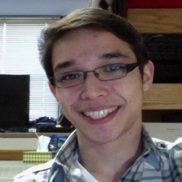
Christian modestly calls his first semester of college at Virginia Tech University “a wake-up call” because he had to work harder than he thought he would. In the end, the Dumfries, Virginia native achieved a 4.0 GPA making both the Dean’s and President’s list. Christian has come a long way since he was diagnosed with aplastic anemia in August 2006 at age 12. Back then, he spent 92 days in the hospital and had to miss his entire seventh grade year while receiving blood and platelet transfusions and being treated with immunosuppressive medications. To show his determination to keep pace, while he was homebound and still under treatment, Christian managed to complete that school year’s worth of work in five months. He was healthy by the time he reached high school achieving a 3.8 GPA and being the only student in his school to enroll in both advanced placement biology and chemistry. His experience with aplastic anemia has led him to the medical field. At Virginia Tech, he is pursuing a pre-med degree with the goal of becoming a hematologist/oncologist. Over winter break, Christian was able to observe surgeons in the hospital for a week and he has also developed an interest in orthopedic surgery. Christian’s sport of choice is rock-climbing, something he took up to “prove to myself and others that I could do things they said I couldn’t.” He has continued to climb at Virginia Tech joining the club there. Christian says he was so eager to join, he emailed the club president before sign-ups had even begun. This is Christian’s second Matthew Debono Scholarship award.
In His Own Words
If I were to give any advice to kids who have been diagnosed with aplastic anemia and to their family, it would be that they are not alone. From the stages of diagnosis through treatment, there is support available from many different people and organizations. The physical side effects of the disease were caused mostly from being sedentary for too long and the drug treatments. Both of these things are temporary side effects, and will pass with time. It is important to stay active even when you are unable to do very much; every little bit counts. I remember walking around the hospital ward at least a couple times every other day. In addition to this, I did physical therapy in the hospital.
The emotional toll aplastic anemia takes is much greater. I remember I felt weak and lethargic just sitting in the hospital bed the whole time not doing much. I recommend finding ways to pass the time. Maybe continue a hobby that you already have or pick up a new one; anything to give your mind a break from what’s going on. There are several people in addition to the nurses and doctors to help you through the whole ordeal. Enduring aplastic anemia is a challenge nobody wants to face. It helps knowing that there are people and organizations out there who want nothing more than to help you. After enduring it myself, I believe it made me a stronger individual in the long run.
Catherine MacLean
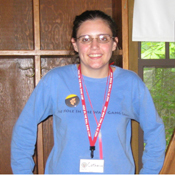
When Catherine was four years old in 1996, she was diagnosed with severe aplastic anemia. She was initially treated with immunosuppressive therapy and afterwards underwent a combined bone marrow and cord blood transplant received from her brother in 2001. While it was a difficult experience, for Catherine it has meant that living life to the fullest involves taking advantage of opportunities. As a nine-year old, she organized a craft fair that, with the help of her siblings, has run for 13 years raising money for AA&MDSIF. The South Hamilton, Massachusetts native has been a counselor at the Hole in the Wall Gang Camp that serves children and families coping with cancer. Because of her illness, Catherine says she’s “done everything from advocating to Congress, watching surgery on a dog, to ziplining off a 40-foot tower in the dark."
This fall, she will enter her senior year at Wesleyan University in Connecticut with a double major in Biology and Science in Society, maintaining a 3.8 GPA. Her academic interests are primarily in public health. In the fall of 2012, she made a presentation at Dana Farber Cancer Institute’s School Liaison Program discussing the transition to college for survivors of cancer, bone marrow failure, and related disorders. She is also a disability rights advocate at her university. This summer she will be working on two internship projects: one for the Schwartz Center for Compassionate Healthcare in Boston and one for AA&MDSIF. This is Catherine’s third consecutive scholarship award.
In Her Own Words
A diagnosis of bone marrow failure is an awful thing to strike a family. It guarantees extensive medical treatment, uncertainty, and a good deal of pain, emotional and physical. But, my main piece of advice to families is that it does not guarantee that your entire life will be difficult and painful, and the challenge is to create opportunities for fun, joy, and excitement. When I think back on my childhood, I am as likely to think of a sleepover, family vacation, or goofy joke I had with my brothers as I am to think about a difficult memory of medical treatment. My family and I were able to take advantage of some opportunities that would not have been present in our lives without my illness. Seek out organizations aimed at families facing the same illnesses, because they will help to provide these opportunities, and also provide a critical level of community. I cherish friendships formed through the circumstance of my illness, because I share something with those peers, and my parents share something with those parents, which is incredibly rare but valuable.
Seek out as many rich opportunities and as many normal opportunities for your family as possible. Work creatively with the limitations you have to make good memories and experiences happen, some having to do with bone marrow failure and some completely separate. I attended school with restrictions nearly full-time throughout my illness, and my parents made every effort to keep my brothers' routines normal, both of which made an enormous impact in our perception of the experience.
Tim McCarthy

Tim’s music professor at St. Olaf College in Northfield, Minnesota calls him “extraordinary” and gifted at a level “only the top 5% of college music students in the United States can match.” His passion is playing the trumpet – something he plans to do professionally for the rest of his life. Tim currently plays lead trumpet for the St. Olaf Jazz Band, which won an award for the top undergraduate ensemble in the U.S. last year. He plays solo trumpet for the St. Olaf “regular” Band and plays with their orchestra as well while maintaining a 3.5 plus GPA. Making music has allowed Tim to travel all around the country and the world. Last summer, he traveled to China to tour with the orchestra and this summer, his brass quintet has been asked to perform in Germany at a festival. Tim was also accepted to play this summer at the Round Top Music Festival in Texas which consists of six weeks of intensive training in orchestral and chamber music.
Diagnosed with aplastic anemia in the seventh grade, Tim is receiving his second Matthew Debono Scholarship. When he was diagnosed in 2005, the soon-to-be college senior from Brush Prairie, Washington, had dangerously low blood counts. He lost all energy and could no longer play baseball or soccer. He was on the verge of needing a bone marrow transplant. Before undegoing any drastic treatments, Tim’s parents sent him to his grandparents in Colorado, hoping that a change to a high-altitude environment would help. After four extended trips to Colorado in one year, his counts gradually came back up and remarkably, Tim was much improved by the next year. There has been some recent good news. For the first time in eight years, 21-year-old Tim’s platelet count has returned to the normal range! Besides music, Tim is an avid fisherman and bow hunter, activities he says he does to “keep himself sane.” After graduating, Tim will apply for graduate school and hope to earn an assistantship at a good music school or work for a few years before pursuing his master’s.
In His Own Words
I guess the best advice I can give other patients is to keep hope, and to hold on to any small piece of normalcy you can find. For me, this anchor was music. I had been playing piano since first grade, and began trumpet in middle school. I couldn’t participate in sports anymore, but being able to play trumpet in band gave me some feeling of security. It helped me to believe that I still had a small piece of my identity and the life I had been living before.
Christopher Nein
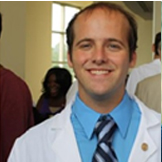
A first-year medical school student at Eastern Virginia Medical School, Chris has earned his third AA&MDSIF scholarship, not only for his academic accomplishments, but also for his extraordinary character. The aspiring physician’s dream is to open a clinic in Haiti and provide healthcare to a village that currently has none. Chris has been to Haiti three times and hopes to return again next year. The Chesapeake, Virginia native says he’s enjoying his first year of medical school. In one of his classes, he was asked to provide the name of an illness for the class to learn about. As a result, several future doctors learned about aplastic anemia, the disease Chris was diagnosed with at age two. He remembers little about that time when he received a bone marrow transplant from his brother. Because of the memories of his parents and family, it has left an indelible mark on him. He says he “always felt a calling to go into pediatric hematolgy and oncology, but I sort of suppressed that desire out of fear.” His mother was unfortunately recently diagnosed with breast cancer. It has spurred him to pursue that specialty so that he can eventually be matched into a pediatric residency and pedatrics/oncology fellowship.
The 23 year old will be having an eventful summer since he will be married in July. At their wedding reception, Chris says they hope to add several guests to the bone marrow registry as they will be providing do-it-yourself “Be The Match” kits. Chris is a 2011 graduate of Old Dominion University where he attained a 3.8 GPA. He says that he often wishes that Matthew would have survived his battle with aplastic anemia and there wouldn’t be a need for such scholarships. Chris says that he tries to live his life in a way that honors Matthew and all others fighting bone marrow failure diseases.
In His Own Words
My aplastic anemia diagnosis came when I was only two years old. My parents and family members recall every single moment with vivid memory. I can only recall glimpses of that time. My brother was six years old and served as my bone marrow donor, because he was a perfect match for me. The time was tough, but my family and friends came together and we all collectively fought throughout the entire ordeal.
From an open letter he wrote to bone marrow failure disease patients: Here I am, twenty years later, writing a letter to you. Though we have never met, we are bonded in a fraternity that no one ever wanted to join. I feel so blessed to have an opportunity to possibly lift your spirits for even just a moment. In the same way, I know you will feel the same calling to help others once your treatment is finished and this disease is part of your past. Well, I say part of your past, but it really is not. Every day, I remind myself that every breath I take is a gift. After fighting and surviving a blood disorder, it implants a sense of calling into your DNA. If you are anything like me, your dreams and aspirations will be very high. After winning the battle with this illness, it really instills in you that anything is possible as long as you work hard and have the right motivation.
Kylene Ogborn
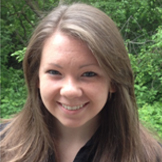
Diagnosed with both aplastic anemia and PNH in 2009, Kylene continues to work towards her dream of becoming a nurse, specializing in pediatric hematolgy/oncology. As a three-time AA&MDSIF scholarship recipient, she has matured as a person and has become a tremendous self-advocate learning about her diseases and working with physicians. Next fall, Kylene will be a senior at Elmhurst College in her home state of Illinois. An excellent student who has compiled a 3.67 GPA while taking a difficult curriculum, Kylene says she is “thriving and loving everything she’s doing” in her future field. There have been some recent struggles with her health. She has been hospitalized twice for symptoms related to cold and flu and has found out that the type of PNH she has is causing her medication to be less effective. This may lead to more frequent testing and possible bone marrow aspirations. Kylene is a courageous young lady who is grateful for the opportunities she has been given. The 21-year-old’s advice to patients is to “cherish your life and all of its small moments, and let go of all that you cannot control.”
In Her Own Words
On the day I was diagnosed with PNH, my family was getting together for a long planned family dinner. Before we left that evening, I asked my mom, and through her the rest of my family, to not discuss anything regarding the diagnosis over dinner. As we sat eating our meal, there was an undeniable hovering of emotion - of concern and curiosity. It dawned on me then that my family was my biggest support system. Of course, I knew this before, but had not realized it until that moment. They were all being so respectful in doing what I had asked and what they believed was best for me, even if that meant being left in the dark. I did find myself telling my grandmother what happened early that day, allowing the flood of questions, and open line of communication, to begin.
This type of family support and open communication is a key aspect in facing these conditions. Allowing yourself to take the time to explain what is happening to those who love you will be the best therapy you will find. Finding those who support you and want to take on your feelings will be one of the most important things you can do in life after diagnosis. It is through them that a major portion of healing begins. Another core component that gave me strength early on, and to this day still gives me strength, is my mother’s dedication to educating herself on my conditions. I always joke and say my illness is her hobby, but in all seriousness, she knows the importance of education and its positive affects for both of us. The last piece of critical advice I can provide is to find a doctor with whom you can build a solid and trusting relationship. You need a doctor who is willing to learn and consult with others. These medical conditions are rare, particularly PNH in pediatrics, and finding a physician who is well versed in the condition is even more of a rare find. However, if you find a doctor who wants to learn about your condition, and will go to endless lengths to help you, then that is the individual who you should place your trust in.
Nick Pipitone
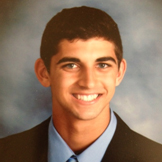
Some people are born leaders. In Nick’s case, his leadership abilities might have stemmed from age one when he was diagnosed with aplastic anemia in 1995. Since no one in the family was a match to donate their bone marrow, his parents were told he had a slim chance of survival because his platelets were so low. Nick spent a month in the hospital and was treated with immunosuppressive drugs for a year before making a remarkable turnaround. Nick is now a healthy 18 year old who this fall will attend the University of Albany in upstate New York. According to his teacher and basketball coach, Nick is unique because “he has the rare ability and talent to raise the bar for his own work and everyone around him. He assists and leads others to levels they believed were unobtainable.”
When Nick was in eighth grade, he wanted to try out for the junior varsity basketball team. He was given every reason he could not make the team. Nick took this as a challenge to not only prove to the coaches he could do it, but to himself. He says he “worked out every day and would not stop practicing for the day until he had improved some facet of his game. I never gave up and kept pushing to be great.” He made the team and later on became captain of the varsity basketball team and junior varsity baseball team. He also played football. Nick has been a mentor to young children helping them with their basketball skills and has raised money for basketball scholarships. When his mother was diagnosed with breast cancer, he raised close to $3,000 for the Avon walk; he has also raised money for autism and a local food pantry. An outstanding student with a 3.8 GPA, the Harrison, New York native will be majoring in business and accounting.
In His Own Words
I don’t remember the fight I went through when I was diagnosed with aplastic anemia, but I do understand the fighter it turned me into. It taught me to fight for the things I believe in and for the things in life I want for myself. Whether it’s being the best basketball player I can be or doing well in school so I can go to a good college, I know how to fight to make the most out of every opportunity. I’m happy this disease had a positive effect on my life. It makes me appreciate all I have and gives me a positive outlook on the future I will make for myself.
Through my story, I would love to show kids that anything is possible and you do not have any limitations as a result of aplastic anemia. When I am older, I would love to speak to children that have this disease and to share my experiences with them. I want to let them know you will still be able to achieve your goals and dreams. Keep fighting and think about the things in life that you still want to achieve. Look past all the negatives and look forward to the future. From the day you or your loved ones have been diagnosed, you are a survivor. If you believe that, then you will conquer this disease.
Haley Ramirez
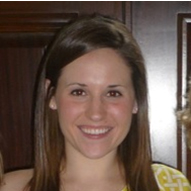
At the age of 26, Haley is recently married and will attend Texas State University’s St. David’s School of Nursing this fall. She is finally able to get back on the road to her future after a serious detour caused by her bout with aplastic anemia. It was the spring of 2006 and 19-year-old Haley was in her second semester as a freshman at Texas Tech University. She had decided to pursue nursing and was even volunteering at a hospital when she was diagnosed. After the diagnosis, she had to drop out of school and started receiving two rounds of ATG treatment as well as cyclosporine drug therapy. Haley went through more than 75 blood transfusions during her treatment.
In the fall of 2007, she returned to Texas Tech suffering from “extreme fatigue” as she says, but she was determined not to let the disease stop her. She successfully completed a degree in sociology in 2010 graduating with a 3.5 GPA. She then started to pursue her passion for nursing again, taking pre-requisite college courses in subjects such as anatomy and physiology while working part-time as a nanny and assistant teacher at a preschool. She even found time to shine as an AA&MDSIF volunteer at Hope, Steps & A Cure walk/5K run events in San Antonio. Two years ago, she worked as a member of the Patient & Family Outreach Committee inviting patients to the walk. Haley ultimately wants to work as a nurse in the hematology-oncology field. Because of her love for children, she would enjoy working with pediatric patients.
In Her Own Words
During my two-month stay in the hospital, there were many moments that I felt I wouldn’t be able to take any more needle pokes or those uncomfortable bone marrow biopsies. However, after weeks of waiting for a glimpse of neutrophils (white blood cells) to reappear after ATG treatment, the moment I was told that I had one, yes one neutrophil, was a cause for celebration. Each subsequent neutrophil that appeared in the following days and weeks made my family and me more hopeful. After years of cyclosporine and many needle pokes later, I have been deemed to be recovered by the many doctors I saw during treatment.
One of the more difficult things during my bout with aplastic anemia was trying to explain to others what it was I was facing. It was extremely frustrating that others couldn’t understand the severity of the diagnosis. I eventually found that by sending friends and family to the AA&MDSIF web site, they could receive the correct information about some of the obstacles I was facing. I think that without the support of extended family and family friends, my journey would have been more difficult for my family. I had numerous aunts, cousins, and grandmothers spend evenings with me in the hospital when my parents needed a much-deserved break. My experience with aplastic anemia has made me a stronger individual both spiritually and mentally. I am now closer to my family and even more passionate about giving back.
Evelyn Stein

For Evelyn, her continued recovery from aplastic anemia has been a case of mind over matter. Diagnosed in 2011 at age 15, the Statesville, North Carolina native has almost willed herself to health, not allowing her disease to interfere with her goals. Along with traditional ATG treatments, she has used hypnotherapy and acupuncture to assist her in her recovery. Her golf coach relates the story of how after receiving treatment one morning during her junior year of high school, Evelyn, who was the captain of her golf team, competed in a match that same afternoon. About half way through, she collapsed on the fairway from exhaustion. Her coach received special permission for Evelyn to ride in a golf cart that season instead of walking between holes. Evelyn refused the special treatment despite her condition. That year, she not only made it through the season, but was the best golfer in the county and conference. Her coach says “that’s how I knew how much of a fighter Evelyn really was.” Besides golf, Evelyn has also been a captain of her swimming and soccer teams and participated in clubs that promote community service and leadership. She is a gifted “A” student who will be attending Lenoir-Rhyne University in North Carolina next fall. Evelyn has known that she wanted to be in the medical field for some time, but has recently decided to follow in the steps of her mother, an occupational therapist. She says, “Her main desire is to help other people.”
In Her Own Words
In the beginning of my diagnosis I was so emotional; angry to think how it was me that got this disease. Sad and hopeless that I would never recover; it was not a happy time in my life. After going through a round of ATG therapy, my numbers started increasing; however, it was not enough. The doctors started leaning towards a bone marrow transplant. I was not ready to take on a procedure so big because my blood levels were not too low at that point. I had to try something else, anything else. I started to go to medical hypnotherapy and acupuncture because my parents had read great things about them and how there has been a case where it helped to cure an aplastic anemia patient. At first I was a little skeptical but soon learned about how the mind can help heal the body. I started practicing this and began to see a difference in my health; I was getting better slowly but surely. I continued to play golf and swam on my school’s swim team. It was more difficult, but nothing was going to stop me from doing the things I loved.
Staying positive was key to my recovery. I would always forget that I had aplastic anemia. My friends treated me as if I was not even sick. I am now 17 years old and my blood count is doing great. My white and red blood cells are in the normal range, and my platelet count is continuing to increase. My advice for those newly diagnosed patients would be to believe you will get better. If you realize that your mind is the most powerful component to getting better, you can increase your recovery time significantly.
Jennifer Ullman
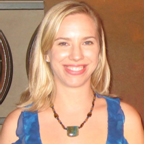
Jennifer has twice overcome her aplastic anemia diagnosis. The first time was in 2000 when she was 18 years old, the summer before her sophomore year of college. The Sonoma, California native started school that fall but had to withdraw because her blood counts dropped dramatically. She moved back home and started successful ATG treatment and within five months her counts were close to normal. Jennifer returned to college in the spring of 2001. During that year, she also attended her first AA&MDSIF Patient and Family Conference and found support as part of a patient community. She was able to complete her college education in 2004 and study abroad in Chile during her junior year graduating with a bachelor’s degree in international studies.
One year later, she had a relapse. She says, “This was a difficult blow to my confidence. I had convinced myself that aplastic anemia would never come back.” Again she received successful ATG treatment. Again she traveled to an AA&MDSIF conference and spoke with other patients to find “the courage and optimism to keep following my dreams.” Jennifer is now 31 years old and has been in remission since 2006. Her experience with aplastic anemia created an interest in the healthcare field. For the past two years, she has been working part-time in the field, volunteering and taking pre-requisite coursework at local colleges to prepare for obtaining a Masters degree in Occupational Therapy. This fall she will start her degree work at San Jose State University. Her goal is to work in a hospital or outpatient rehabilitation setting. With her degree in international studies and facility with Spanish, she hopes to have the opportunity to work with patients within the Latino community.
In Her Own Words
Occupational therapists help patients to regain function and movement after they have suffered from illness or injury. They also work with patients to make adaptations to their lives and environment to achieve a maximum amount of independence. I am pursuing this career because it is a good fit for my personality and interests. I am very creative, and I have always enjoyed helping people find the tools they need to accomplish their goals. I enjoy working one on one with others.
Since my experience with aplastic anemia, I have been interested in the fields of human biology and medicine. I volunteered for the last two summers at a pediatric occupational therapy clinic where I assisted at camps for children with disabilities. I was inspired by the therapist’s use of play and activity to help the children develop the skills they will need for learning and socializing at school. My experience with aplastic anemia made me passionate about the health care field and about helping patients find the community support and resources they need. It has also made me empathetic towards patients. I know what it is like to deal with and overcome depression, lack of motivation, and frustration. I want to help people who are going through these same trials to find the light at the end of the tunnel and have patience while they are working through the process.


